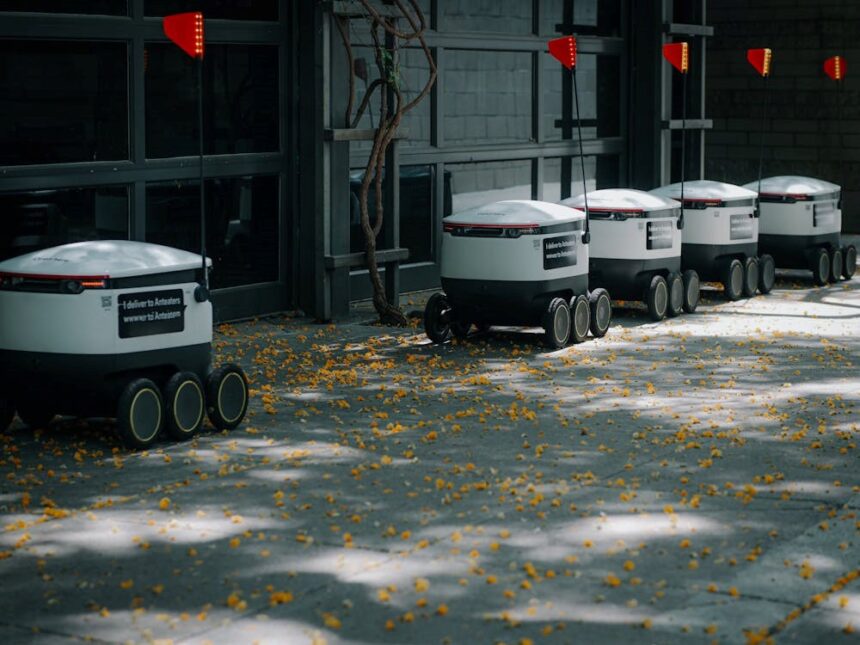Workplace safety is no joke. Gone are the days when a simple “Caution: Wet Floor” sign did the trick. Nowadays, technology is stepping in to save the day. From high-tech sensors to AI-driven risk management, the modern workplace is getting a safety makeover.
Here are six workplace safety trends being driven by new technologies:
1. Preemptive Hazard Detection with Advanced Sensors
Imagine walking through a factory where advanced sensors watch every corner. These aren’t just regular sensors. They detect gas leaks, unusual temperatures and even movement patterns. These sensors can sense when something’s off before it becomes a big problem.
Take, for example, factories handling chemicals. A small leak could mean big trouble. Advanced sensors pick up even the tiniest leaks and alert workers instantly. This quick detection prevents disasters and keeps everyone safe.
These sensors aren’t limited to factories. Construction sites, warehouses and even offices use them. They provide real-time data, helping to monitor safety conditions 24/7 and no longer relying on just the human eye. The technology ensures no hazard goes unnoticed.
2. Improved Employee Safety with Wearable Technology
Wearables are everywhere. From fitness trackers to smartwatches, everyone seems to be wearing some gadget. But wearables aren’t just for counting steps. In workplaces, they play a crucial role in safety.
Imagine a construction worker wearing an intelligent helmet. This helmet isn’t just protecting their head. It’s tracking their vitals. If the worker gets too hot or shows signs of fatigue, the helmet sends an alert. This way, supervisors can intervene before things get dangerous.
Bright vests, gloves and even boots are available. These devices monitor the environment and the worker’s condition. If someone falls, the wearable can automatically call for help. This prompt reply can be crucial, particularly in remote locations.
3. Artificial Intelligence for Risk Management
AI is not just for futuristic movies. It’s here and it’s making workplaces safer. AI systems evaluate data from multiple sources to forecast potential risks. They look at past incidents, current conditions and even weather forecasts. This helps in making informed decisions to avoid accidents.
For example, in a warehouse, AI can anticipate when a machine is likely to malfunction and notify maintenance teams in advance. This prevents unexpected breakdowns that could lead to injuries. AI also helps in scheduling tasks. It ensures that employees are not overworked, reducing fatigue-related accidents.
AI is like having a super-smart assistant. It never sleeps, never gets tired, and is always on the lookout for potential dangers. Companies are increasingly relying on AI to keep their workplaces safe and efficient.
4. Workplace Data Protection through Cyber Security Training
Workplace safety isn’t just about physical harm. In the digital age, data breaches are a significant threat. Companies store vast amounts of sensitive information and protecting this data is crucial. That’s where cyber security training comes in.
Employees are often the first line of defence. Training them on cyber security practices is essential. They learn how to recognise phishing emails, use strong passwords, and secure their devices. This training reduces the risk of data breaches significantly.
Regular updates and training sessions keep everyone informed about the latest threats. It’s like having a digital shield protecting the company’s valuable information. Cyber security training ensures that employees are vigilant and the company’s data stays safe.
5. Compliance with GDPR for Employee Privacy
Data privacy is a big deal. The General Data Protection Regulation sets the rules for handling personal data. Companies must comply with these laws to protect employee privacy, which is why GDPR training has become essential.
Employees need to understand GDPR’s requirements. Online training modules make it easy. They can learn at their own speed, fully understanding the concepts. This training helps employees handle data responsibly and legally.
GDPR compliance isn’t just about avoiding fines. It’s about building trust. Employees feel secure knowing their personal information is handled with care. Taking GDPR training online and passing the assessment ensures everyone in the company is on the same page, promoting a culture of privacy and trust.
6. Quicker Emergency Response with Smart Systems
Emergencies can strike anytime, anywhere. Being prepared is vital. Intelligent systems are revolutionising emergency response in workplaces. These systems use technology to provide quick and efficient responses during crises.
Imagine a fire breaks out in an office building. Smart smoke detectors sense it immediately. They trigger alarms, send alerts to all employees, and even inform the nearest fire station. The system also guides employees to the safest exit routes, avoiding panic and confusion.
Intelligent systems aren’t limited to fire emergencies. They manage all types of crises, from medical emergencies to natural disasters. They provide real-time information and support, ensuring that help arrives as quickly as possible.
Conclusion
Technology is a game-changer for workplace safety. Advanced sensors, wearable tech, AI, and intelligent systems are just the beginning. As technology advances, the methods it uses to safeguard workers will also evolve.
The future holds exciting prospects. Think of drones monitoring construction sites, robots handling dangerous tasks and virtual reality training for emergency scenarios. Technology will continue to make workplaces safer, smarter, and more efficient.
In the end, it’s all about creating a safe environment where employees can thrive. Embracing technology is the way forward. It’s not just about preventing accidents but also about fostering a culture of safety. The modern workplace is getting safer, and technology is leading the way.






